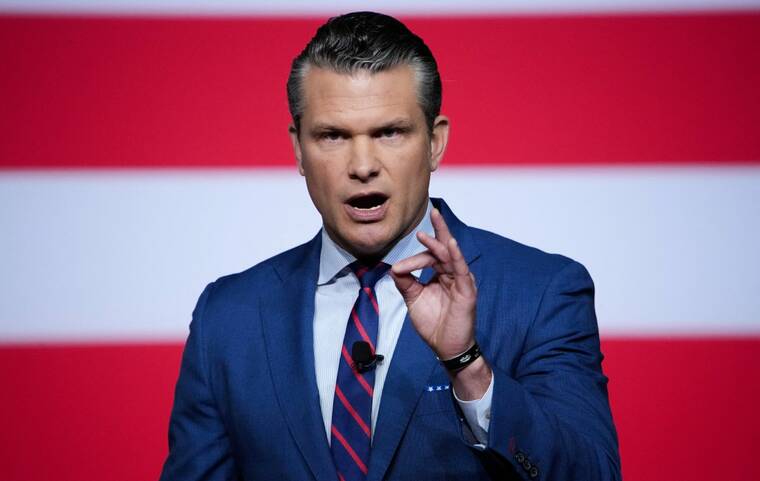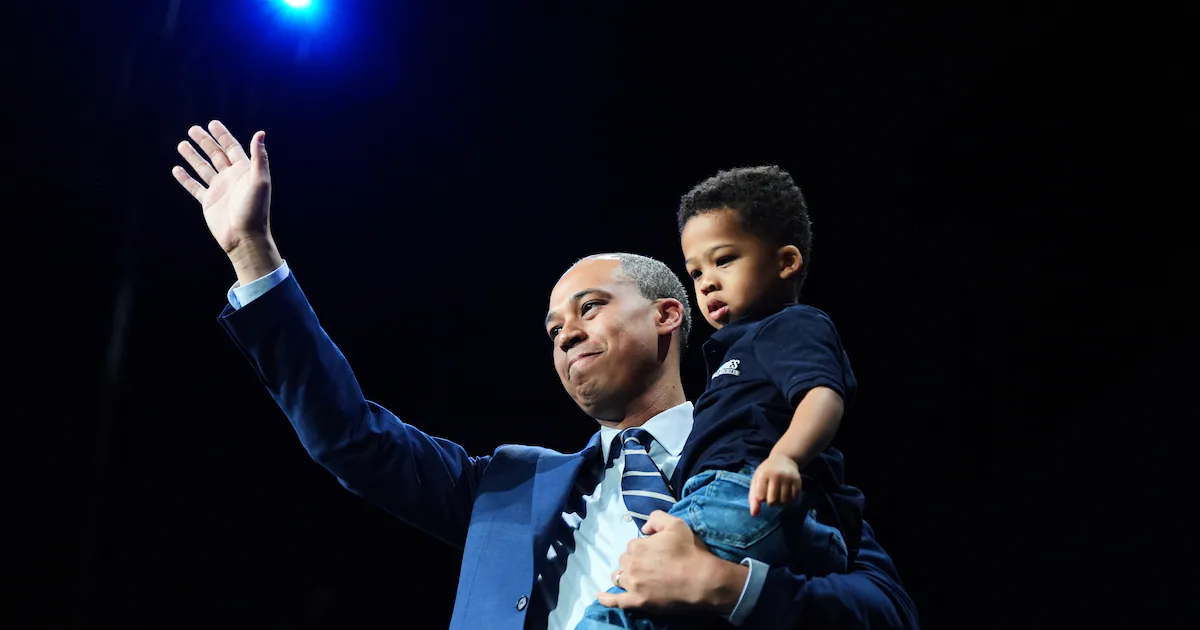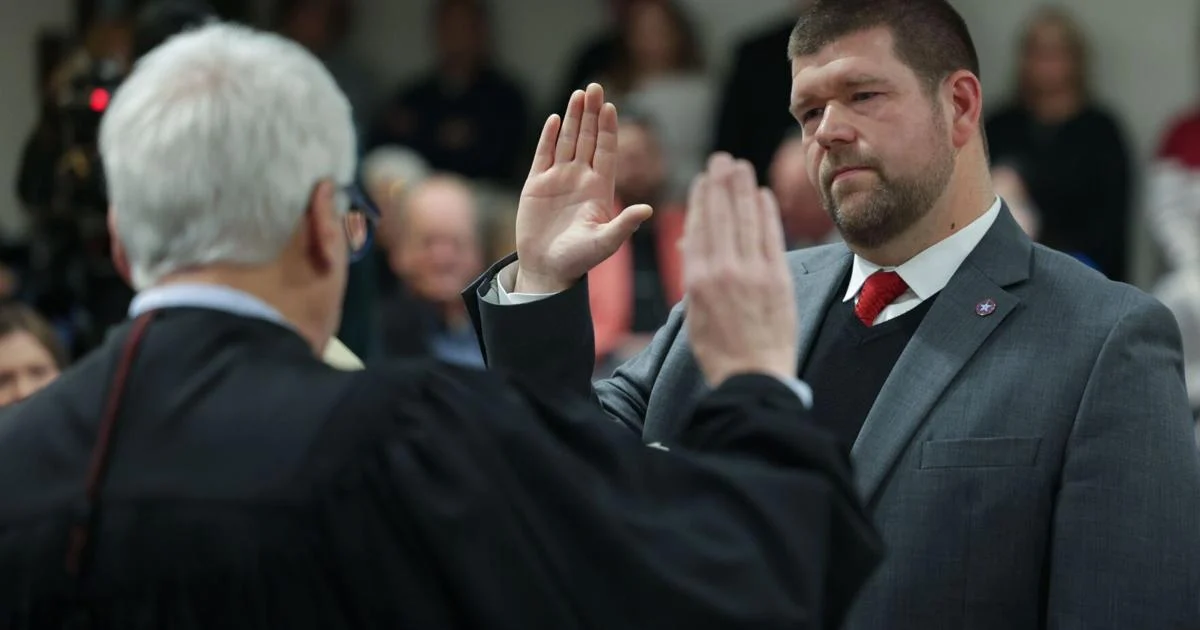Copyright staradvertiser

WASHINGTON >> Defense Secretary Pete Hegseth has fired or sidelined at least two dozen generals and admirals over the past nine months in a series of ousters that could reshape the U.S. military for years to come. His actions, which are without precedent in recent decades, have come with little explanation. In many cases, they have run counter to the advice of top military leaders who fought alongside the officers in combat, senior military officials said. The utter unpredictability of Hegseth’s moves, as described in interviews with 20 current and former military officials, has created an atmosphere of anxiety and mistrust that has forced senior officers to take sides and, at times, pitted them against one another. Hegseth has delayed or canceled the promotions of at least four senior military officers because they previously worked for Gen. Mark Milley, a former chair of the Joint Chiefs of Staff whom President Donald Trump loathes and has repeatedly accused of disloyalty. One is Maj. Gen. James Patrick Work, who was expected to be the deputy commander at U.S. Central Command, which oversees troops in the Middle East, officials said. Work, one of the Army’s most combat-experienced officers, played a crucial role leading U.S. and Iraqi troops to victory over the Islamic State group in Mosul, Iraq, during the first Trump administration. He also served as Milley’s executive officer in 2018, which might have led Hegseth to view him with skepticism, senior Army officials said. Despite the strong backing of top Army leaders, Work remains in limbo, his future uncertain, senior military officials said. Other officers fell out of favor after being targeted on social media by right-wing influencers or because they had voiced support years earlier for diversity, equity and inclusion programs. Rear Adm. Milton Sands, the commander of the Navy SEALs, who pushed to have female instructors in SEAL training, was fired by Hegseth in August. Some leaders were ousted for offering candid military assessments. Hegseth soured on Adm. Alvin Holsey, the head of U.S. Southern Command, after he raised questions about deadly military strikes on boats in the Caribbean Sea. The Trump administration has said, without offering detailed evidence, that the boats were trafficking drugs. Holsey abruptly announced last month that he was stepping down, less than one year into what is typically a three-year assignment. Another senior officer, Lt. Gen. Jeffrey A. Kruse, a 35-year Air Force intelligence officer who led the Defense Intelligence Agency, was forced from his position after his agency cast doubt on Trump’s assertion that U.S. airstrikes in June had “obliterated” Iran’s nuclear program. In his public appearances, Hegseth has stressed “unity” as a critical component of a lethal military. “Your strength is your shared purpose,” he told several hundred troops recently on a trip to Asia. “Your strength is the unity of our mission.” But his actions have worked to undermine that critical asset, military officials said. Hegseth, a former Fox News commentator and Army National Guard major, began his tenure by firing several high-profile military leaders, including Gen. CQ Brown Jr., the chair of the Joint Chiefs of Staff. Since then, the defense secretary has targeted an array of officers who seemed destined to ascend to four-star rank. Sean Parnell, the Pentagon’s top spokesperson, said in a statement that the “military has never been more unified” and cited Hegseth’s work to dismantle the Biden administration’s diversity, equity and inclusion agenda and restore the military’s “warrior ethos.” “The department will continue to elevate those in our ranks who are committed to warfighting and meritocracy,” the statement read. A new administration has the right to choose military leaders it trusts, said Kori Schake, a defense specialist who served on the National Security Council in the administration of President George W. Bush. But she worried the Trump administration was “squandering an enormous amount of talent.” The scale of the firings also has alarmed some in Congress, like Sen. Elissa Slotkin, D-Mich., who previously served as a CIA officer analyzing foreign militaries. She recently described the Hegseth’s moves as a “purge.” “The places where we’ve looked at these kinds of things are places like China,” she said. “I used to work on Iraq. They would do the same thing.” Another concern: Hegseth’s moves have fed the impression that there are pro-Trump and anti-Trump generals, officials said. In a September speech attended by hundreds of senior officers from around the world, Hegseth singled out several recently retired four-star generals for scorn. “The new compass heading is clear,” Hegseth told the officers gathered at Quantico, Virginia. “Out with the Chiarellis, the McKenzies and the Milleys.” He was referring to Gen. Peter W. Chiarelli, the former Army vice chief of staff, and Gen. Kenneth F. McKenzie Jr., a former head of Central Command. Several officers in the crowd that day had worked for the generals Hegseth disparaged and considered them mentors. So, too, had more junior officers. “The message being sent to those younger soldiers and sailors and airmen and Marines is that politics can and should be part of your military service,” said Rep. Jason Crow, D-Colo., a former Army Ranger. “It’s a dangerous message.” Gen. Stanley McChrystal, who led the military’s elite special operations troops for years in Iraq and Afghanistan and is now retired, echoed the concern. “The U.S. military’s long history of remaining apolitical has always depended upon a norm in which the military avoided politics while civilian leadership respected and protected those in uniform from the political fray,” McChrystal said. “Recent months have challenged the paradigm, at significant risk. Once lost, the legitimacy of a military that reflects and represents all Americans will be difficult to recover.” Hegseth’s personnel moves have hit several of the Army’s most admired and combat-tested leaders. In late October, he forced Lt. Gen. J.P. McGee from his position as the director of strategy and war plans on the Joint Staff, military officials said. The move was reported earlier by CNN. McGee deployed 10 times to war zones, according to his military records. Work, who stepped down in August as the commander of the 82nd Airborne Division, spent nearly six years in combat zones over the course of his career. Military officials spoke on the condition of anonymity to discuss internal personnel matters at a time when the Pentagon’s culture has become increasingly punitive. Until recently, Work’s promotion seemed like a certainty. All 10 of the officers who commanded the 82nd Airborne before him were promoted to three-star rank. Nine made four-stars. It is still possible that Work will fight through Hegseth’s doubts and earn a third star, senior Army officials said. Most of the officers forced out by Hegseth are likely to land on their feet, hired by defense contractors, big companies or universities. The biggest blow may be felt by those left behind. Speaking to students at West Point in 2018, Work shared some of the lessons he learned from two decades of war. “Understand who you’re partnered with, understand who you’re fighting,” Work, then a colonel, told the cadets. He talked about his efforts to bond with an Iraqi partner during the fight against the Islamic State in 2017. “Fourteen years ago today, I set foot in Baghdad,” Work recalled telling his Iraqi counterpart. “Fourteen years ago, I was in the hospital because I had been wounded by you all at Haditha,” the Iraqi soldier replied. The exchange, Work said, demonstrated one of the Army’s hard-won lessons in Iraq and Afghanistan: In long, complex wars, allegiances can shift. Former enemies can become trusted allies. Many of Hegseth’s dismissals have left senior military leaders and even Trump administration officials puzzled and speculating about the cause. Such was the case with Gen. James J. Mingus, the Army’s vice chief of staff. Senior Army officials assumed that Mingus would stay in his position until at least next summer. The four-star officer has played a critical role, alongside Gen. Randy George, the Army’s chief of staff, in remaking the Army for high-intensity combat and drone warfare in the Pacific. Instead, his retirement was hastily announced on Oct. 21 with little input from senior Army leaders or Army Secretary Daniel P. Driscoll, military officials said. No reason was given for Mingus’ early dismissal or his replacement by Lt. Gen. Christopher C. LaNeve, who formerly led the 82nd Airborne Division. In the case of Rear Adm. Michael Donnelly, the end came because of a seven-year-old story, recycled through the right-wing media. The Pentagon announced in June that Donnelly, the former commander of the aircraft carrier Ronald Reagan, was being nominated to be vice admiral and commander of the Navy’s largest overseas force, the 7th Fleet. But in July, Hegseth withdrew the nomination after The Daily Wire reported that Donnelly had allowed drag performances on the aircraft carrier. Navy officials said the article belied what had actually happened: One sailor in drag performed during a talent show on the carrier. Donnelly was in Singapore at the time. As of the end of October, the Navy was still on the hunt for a new 7th Fleet commander. Some rising stars have survived right-wing scrutiny. Lt. Gen. Jonathan P. Braga, a decorated Special Operations officer, was sharply criticized in a conservative blog for promoting diversity initiatives. But the strong backing of several senior officers in the elite Special Operations community, which Hegseth respects, protected him. Braga took over the shadowy Joint Special Operations Command, which includes the Army’s Delta Force and the Navy’s SEAL Team 6, in late September. In late September, Lt. Gen. Douglas A. Sims II’s 34-year military career came to an abrupt end at a military base near the Pentagon. On the day of his retirement, Sims marched past columns of soldiers in their dress uniforms who were awaiting his review. The Army band played a John Philip Sousa march. A row of howitzers sounded a thundering 17-gun salute. Sims had been the Army’s choice to run Forces Command, a four-star job focused on making sure that commanders around the world have trained-and-ready forces available to them. The command, while important, is rarely a source of controversy, and the choice of who will lead it is usually left to the Army. But Hegseth blocked Sims’ promotion because he was seen as too close to Milley, according to three people with knowledge of the matter. Before he officially departed the Army, Sims recited the names of the five soldiers killed under his command. His last remarks in uniform focused on the values that hold an Army together through hard times — the same values many senior military officials worried were now under strain. “Everything we do is about people,” Sims reminded the crowd. “The military doesn’t have a monopoly in this regard, but the stakes of what we do are just different.” Gen. Dan Caine, the chair of the Joint Chiefs of Staff, listened in the packed bleachers next to Brown, his predecessor, whom Hegseth had fired in February. This article originally appeared in The New York Times. © 2025 The New York Times Company



